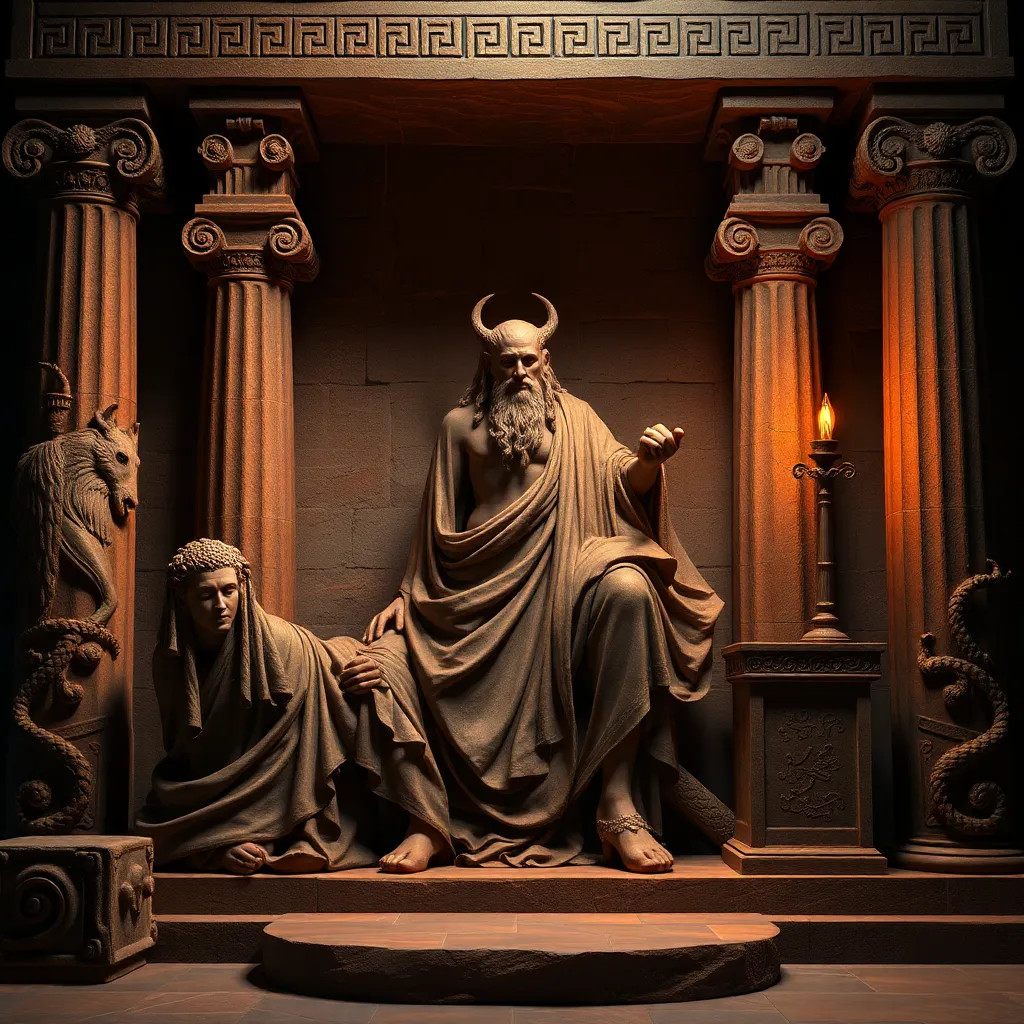The Rites of Passage: Hades’ Role in Ancient Greek Funerary Customs
I. Introduction
In Ancient Greece, rites of passage were crucial events that marked significant transitions in an individual’s life. Among these, funerary customs held a special importance as they represented the final journey of the deceased and the cultural beliefs surrounding death and the afterlife. These customs were deeply rooted in the belief system of the Greeks, which emphasized the need for proper rituals to ensure the safe passage of souls. At the center of these beliefs was Hades, the god of the Underworld, who played a pivotal role in the funerary practices of the time.
II. Understanding Hades in Greek Mythology
Hades is often misunderstood as a malevolent figure, but he is primarily the god of the Underworld, ruling over the realm where souls reside after death. Unlike the more well-known Olympian gods, Hades was not involved in the affairs of the living and was often depicted as distant and stern.
- The persona of Hades: Hades is often represented as a regal figure, cloaked in dark robes, with a scepter in hand, symbolizing his authority over the dead.
- Distinction between Hades and other gods: While Zeus and Poseidon presided over the sky and sea, respectively, Hades governed the Underworld, rendering him a crucial but often overlooked deity.
- Hades’ influence on funerary practices: The presence of Hades in funerary customs underscores the belief that proper rituals could influence the journey of the soul in the afterlife.
III. The Concept of the Afterlife in Ancient Greece
The ancient Greeks held complex beliefs about what happened after death, a reflection of their understanding of immortality and the soul.
- Beliefs about life after death: Many Greeks believed in an afterlife where the soul would journey to the Underworld, often depicted as a shadowy realm.
- The journey to the Underworld: The deceased was thought to embark on a perilous journey, crossing the river Styx, typically facilitated by the ferryman Charon.
- The significance of proper burial rites: Proper funerary customs were believed to ensure a smooth passage to Hades, preventing the soul from wandering the earth.
IV. Funerary Customs and Rites of Passage
Funerary practices in Ancient Greece were elaborate and varied, reflecting the importance of honoring the dead and ensuring their safe passage to the Underworld.
- Overview of common funerary practices: Common rituals included washing and dressing the body, placing it in a coffin, and conducting a procession to the burial site.
- The role of family and community in the rites: These rites were communal events, where family members and friends played essential roles in the mourning and burial process.
- Importance of rituals in ensuring safe passage to Hades: The rituals were believed to appease Hades and ensure the deceased could enter the Underworld without hindrance.
V. The Role of Offerings and Sacrifices
Offerings and sacrifices were integral components of funerary customs, reflecting the relationship between the living and the dead.
- Types of offerings made to Hades: Offerings often included food, wine, and personal items, which were placed at gravesites or in the tomb.
- Significance of sacrifices for the deceased: These sacrifices were intended to provide for the deceased in the afterlife and to gain favor with Hades.
- The impact of offerings on the soul’s journey: It was believed that the soul’s comfort in the afterlife depended on the care shown by the living through these offerings.
VI. The Influence of Hades on Mourning Practices
Mourning practices in Ancient Greece were closely linked to the beliefs surrounding Hades and the afterlife.
- Mourning rituals and their connection to Hades: The rituals performed during mourning were seen as essential for honoring the deceased and ensuring their peaceful existence in the Underworld.
- The symbolism of the three-day mourning period: Traditionally, the period of mourning lasted three days, representing a time for the community to come together in grief.
- The transition from mourning to celebration of life: Following the mourning period, families often held a celebration of the deceased’s life, reflecting the belief in an ongoing relationship with the departed.
VII. Hades in Literature and Art
Hades has been a prominent figure in ancient literature and art, influencing perceptions of death and the afterlife.
- Representation of Hades in ancient texts: Hades appears in various ancient works, such as Homer’s “The Iliad” and “The Odyssey,” where he is depicted as a powerful, yet misunderstood deity.
- Artistic depictions of funerary customs and Hades: Ancient pottery and reliefs often illustrate scenes related to death, burial, and the Underworld, showcasing the cultural significance of these themes.
- Influence of Hades on later interpretations of death and dying: The figure of Hades has influenced not only ancient cultures but also modern interpretations of death, myth, and the human condition.
VIII. Conclusion
Hades plays an integral role in the funerary customs of Ancient Greece, reflecting the society’s values and beliefs about death and the afterlife. The customs surrounding death were not merely rituals but profound practices that underscored the connection between the living and the dead. The lasting impact of these beliefs continues to influence modern funerary practices, reminding us of the cultural significance of rites of passage. As we reflect on the role of Hades, we recognize the enduring legacy of Greek mythology and its insights into the human experience of mortality.




